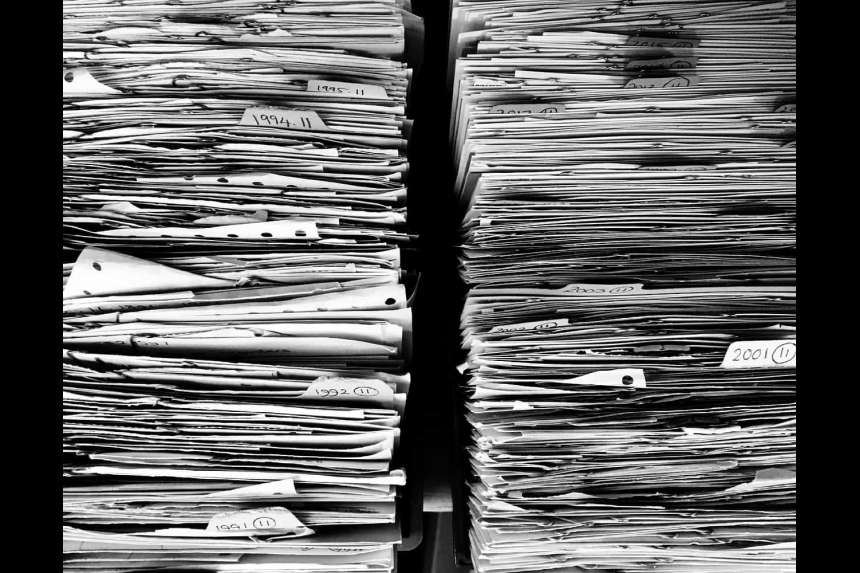Scanning documents is an essential task for companies that possess many paper records. It’s vital to convert physical documents into digital ones so that they can quickly be sorted, stored and eventually found again when they’re needed. However, inexperienced companies will likely be too quick to scan their documents and end up with blurry images that are difficult to read or aren’t high enough quality to be usable.
The solution is to scan at a higher DPI (dots per inch) but not every scanner can scan at a high DPI and increasing this value typically takes the scanner longer to complete a job. It can also result in huge images that take up far more disc space than regular images, and this ends up becoming a very time-consuming process.
There are many considerations to keep in mind when scanning documents, so in this article, we’re going to go through a couple of them to help you find the best way to scan your documents for storage purposes.
Text documents
The most common type of document that will be scanned by a business is a text document. These are mainly things such as contracts, invoices and purchase orders that have clear text on them that is usually from a word processor or something similar. These contain very little handwritten text and maybe have an image or two such as a company logo.
Scanning text documents usually aren’t complicated. A low DPI is generally good enough for text-based documents since there isn’t much detail, but you may want to scan at a higher DPI if you’re going to reprint the document at some stage. Another good reason to scan at a higher DPI is to help the optical character recognition feature of your scanning software. OCR allows your scanning software to convert text into editable text, meaning you can use the documents as templates, edit the values or even change them if you need to amend it.
Do keep in mind that handwritten text will likely not be picked up by the OCR feature of your scanning software, even if it’s a costly and sophisticated system. Attempting to use OCR on handwritten text can often produce errors, and it’s best that you don’t rely on it for anything but printed text.
Image documents
Images should usually be scanned at the highest DPI possible. This is because images tend to contain many details and to preserve them, you’ll need to use a high DPI setting. Since your stored documents likely won’t be accessed for a while and may even be used for reprinting purposes in the future, you want to keep as much of the original image intact as possible.
Since you probably won’t be using OCR to edit anything on images, you won’t be able to edit much on these scanned images outside of using an image manipulation program. These will take quite a while to scan compared to text images, and the extra time could mean much waiting around. As a result, you’ll want to avoid scanning too many image-heavy files if possible.
Depending on what you’re scanning, you’ll want to try and pick the right DPI settings and either enable or disable OCR as needed. The main types of documents you scan will also affect the hardware choices you choose.
Picking the right hardware
Next, you’ll want to consider the type of hardware you use. Heavy-duty scanners will typically be best for heavy uses, such as entire scanning archives of documents quickly or for companies that pump out a lot of invoices and purchase orders on a regular basis.
Size will also be a consideration. The size of the machine could indicate just how powerful it is or how many features it has, but also affects how convenient it is. A smaller device is more accessible to move around and can easily be placed on a desk so that individual employees can scan documents as they’re created or used. However, a larger scanner will likely be more powerful but require a dedicated position in your office.
Large scanners may also double as a copier or a printer, giving it plenty of functions and making it worth the extra space in your office. This also saves money because you won’t need to purchase a separate printer in the future.
Time savings can often be worth paying the extra money for a larger scanner but do keep in mind that this is only really an option for companies that regularly produce hundreds of documents each day and are required to scan them into a document storage system every day. If you’re starting to move to a paperless system and have a large archive of files waiting to be digitised, then there are other options available that don’t require you to purchase an expensive scanner.
Hiring external services
For your document storage needs, there’s another option that you can rely on; third-party services. Instead of buying your scanner, you can hire a company to help you do it with their hardware and software. This is much easier to handle since you typically only need to send a box of documents over to the company and have them manage it from their side.
Its faster, more efficient and ultimately saves you money since you won’t need to purchase expensive machines and pay to keep them going. This is also an ideal option if you’re converting to a paperless document storage solution and need an extra hand to help you digitise all your records quickly and painlessly. Their expertise also means that they’ll help you organise your document storage and ensure that text is correctly transcribed to a digital format with sophisticated OCR software.
Although it may sound expensive, ensuring that your documents are scanned at a high resolution quickly and efficiently is essential to the longevity and usefulness of your document storage solution and it’s a good idea to invest in this facet of your business.
Call: 0117 462 8363 | Email: info@file-centre.co.uk











